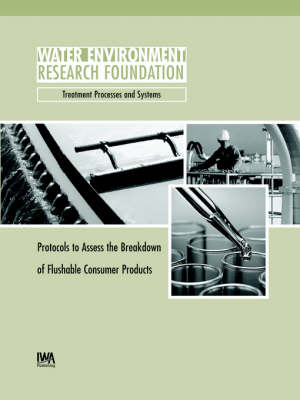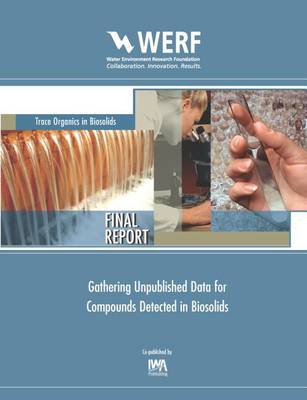WERF Research Report
2 total works
Protocols to Assess the Breakdown of Flushable Consumer Products
by Drew C. McAvoy, G. A. Rece, E. L. Schwab, B. A. Nuck, N. R. Itrich, and R. C. Stark
Published 31 July 2003
A scientifically sound approach is needed to ensure that flushable consumer products are compatible with household plumbing fixtures, as well as wastewater collection and treatment systems. In addition to assessing disposal system compatibility, an assessment approach should also ensure that flushable consumer products do not become an aesthetic nuisance in surface waters and soil environments. This document presents an overall approach for assessing the fate and compatibility of consumer products in wastewater disposal systems. While the focus of this document is on the United States, it is believed that the conceptual approach and many of the test methods could be used to assess the compatibility of flushable consumer products in wastewater disposal systems throughout the world.
Gathering Unpublished Data for Compounds Detected in Biosolids
by Charles Pittinger, Andrew Maier, and Drew C. McAvoy
Published 15 November 2012
Available as eBook onl.
The Water Environment Research Foundation (WERF) commissioned a study to assemble high quality, unpublished data on 61 trace organic chemicals (TOrCs) detected in biosolids. The chemical classes of the TOrCs included antibiotics, steroids, hormones, organotins, surfactants, organosiloxanes, fragrance raw materials, antimicrobials, and alcohol ethoxylates. Data on physical-chemical, environmental fate, ecotoxicology, and mammalian toxicology endpoints were compiled by queries of 48 electronic databases, and by broad communications with corporations, trade associations, water and wastewater utilities, and regulatory authorities.
A substantial volume of unpublished (or recently published) experimental data was collected. Of the 61 TOrCs evaluated, mammalian toxicology data and pharmacological data that can be used to derive human health benchmarks were identified for 29 of the TOrCs. Empirical data for the physical-chemical, environmental fate, and ecotoxicological endpoints were less abundant; however, estimates predicted by structure-activity modeling were more readily available for these endpoints. This investigation identified numerous outstanding data gaps for the 61 TOrCs. Recommendations on how to fill the remaining data gaps are proposed through read-across and derivation approaches.
The Water Environment Research Foundation (WERF) commissioned a study to assemble high quality, unpublished data on 61 trace organic chemicals (TOrCs) detected in biosolids. The chemical classes of the TOrCs included antibiotics, steroids, hormones, organotins, surfactants, organosiloxanes, fragrance raw materials, antimicrobials, and alcohol ethoxylates. Data on physical-chemical, environmental fate, ecotoxicology, and mammalian toxicology endpoints were compiled by queries of 48 electronic databases, and by broad communications with corporations, trade associations, water and wastewater utilities, and regulatory authorities.
A substantial volume of unpublished (or recently published) experimental data was collected. Of the 61 TOrCs evaluated, mammalian toxicology data and pharmacological data that can be used to derive human health benchmarks were identified for 29 of the TOrCs. Empirical data for the physical-chemical, environmental fate, and ecotoxicological endpoints were less abundant; however, estimates predicted by structure-activity modeling were more readily available for these endpoints. This investigation identified numerous outstanding data gaps for the 61 TOrCs. Recommendations on how to fill the remaining data gaps are proposed through read-across and derivation approaches.

